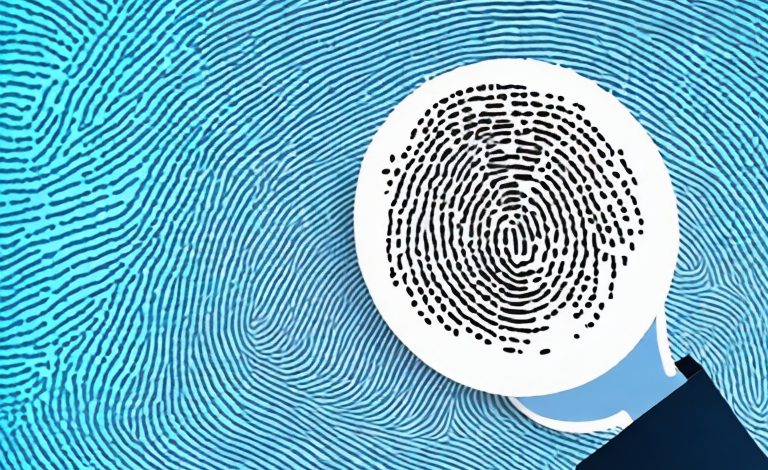Fingerprint identification is one of the most trusted forms of biometric identification used today. It is believed that each person has a unique pattern of ridges and valleys on their fingertips, which can be scanned, stored, and compared to a database to identify a person. This method of identification is used not just by law enforcement agencies but also by various organizations around the world. However, the question remains: Can fingerprints be manipulated?
The science behind fingerprint identification
Before we delve into whether fingerprints can be manipulated, let’s take a closer look at the science behind fingerprint identification. The ridges and valleys on our fingertips are formed during fetal development, and these patterns remain largely unchanged throughout our lives unless we experience an injury or disease affecting the skin on our fingertips.
The unique pattern of ridges and valleys on our fingertips is created by the epidermis, the outer layer of our skin, and the dermis, the layer of skin beneath it. The ridges are formed by raised skin and the valleys are formed by skin that is lower than the surrounding area. These patterns are believed to be unique to each individual and can be used to identify a person with a high degree of accuracy.
One of the reasons why fingerprints are so unique is that the pattern of ridges and valleys is not determined by genetics. While certain genetic factors can influence the overall shape and size of our fingertips, the specific pattern of ridges and valleys is thought to be influenced by a combination of genetic and environmental factors. This means that even identical twins, who share the same genetic code, will have different fingerprints.
Fingerprint identification has been used for over a century in law enforcement and forensic investigations. In recent years, advances in technology have made it possible to analyze fingerprints more quickly and accurately than ever before. Automated fingerprint identification systems (AFIS) use algorithms to compare fingerprints against a database of known prints, allowing law enforcement to quickly identify suspects or match prints found at a crime scene to those in a database.
Understanding the uniqueness of fingerprints
Several factors contribute to the uniqueness of fingerprints:
- The random formation of the ridges and valleys
- The variation in the number, shape, and direction of the ridges
- The location and orientation of the ridges and valleys on each finger
These factors make it highly unlikely that two individuals will have the same fingerprint pattern. In fact, the chance of two individuals having the same patterns on all ten fingers is estimated to be as low as 1 in 64 billion.
Furthermore, fingerprints are not only unique to each individual, but they also remain unchanged throughout a person’s lifetime. Even identical twins, who share the same DNA, have different fingerprints. This is because fingerprints are not solely determined by genetics, but also by environmental factors such as pressure and movement in the womb.
How law enforcement uses fingerprints to solve crimes
Fingerprint identification has been used by law enforcement agencies around the world for over a century to solve crimes. The process involves collecting fingerprints from the crime scene and comparing them to a database of known fingerprints. If a match is found, it can be used to identify a suspect.
Fingerprint analysis can also be used to link a suspect to a crime scene. When a fingerprint is found at a crime scene, experts can compare it to fingerprints taken from a suspect. If the fingerprints match, it provides strong evidence that the suspect was present at the crime scene.
In addition to solving crimes, fingerprints can also be used for other purposes such as identifying victims of natural disasters or accidents. In cases where identification through traditional means such as dental records or DNA is not possible, fingerprints can provide a quick and reliable way to identify individuals. This has been particularly useful in mass casualty incidents where many victims need to be identified quickly.
Common methods of fingerprint collection
Fingerprints can be collected using a variety of methods:
- Traditional ink and paper method, in which the suspect’s fingers are rolled onto a piece of paper using ink
- Electronic fingerprint scanning, in which a digital image of the fingerprint is captured using a scanner
- Chemical methods, such as using a powder or fuming chambers, which can reveal latent prints on surfaces
Another method of fingerprint collection is the use of adhesive tape. This involves pressing a piece of tape onto the surface where the fingerprint is located, and then lifting the tape to transfer the print onto a piece of paper or card. This method is often used when the surface is too delicate or porous for traditional ink and paper collection.
In recent years, 3D printing technology has also been used to create replicas of fingerprints. This method involves scanning a fingerprint and then using a 3D printer to create a physical model of the print. This can be useful in forensic investigations where a physical replica of the print is needed for analysis or comparison.
The legality of collecting and using fingerprints in investigations
The collection and use of fingerprints in criminal investigations are legal in most countries, but there are some exceptions. In some countries, such as France, the collection of fingerprints is only allowed in certain circumstances, such as for suspects in serious crimes or for people seeking certain types of government positions.
There have been cases where the legality of the collection and use of fingerprints has been challenged. For example, in the United States, there have been cases where suspects have argued that the collection of their fingerprints violated their Fourth Amendment rights against unreasonable searches and seizures.
However, in many countries, including the United States, the collection of fingerprints is becoming more common in non-criminal contexts. For example, some employers may require employees to provide fingerprints for security purposes, and some schools may use fingerprint scanners to track attendance.
There are also concerns about the accuracy and reliability of fingerprint evidence. While fingerprints are often considered to be unique to each individual, there have been cases where errors in fingerprint analysis have led to wrongful convictions. As a result, some experts have called for more rigorous standards for the collection and analysis of fingerprint evidence.
The potential for false positives in fingerprint identification
Although fingerprint identification is considered to be highly accurate, there is still the potential for false positives. A false positive occurs when a fingerprint is incorrectly matched to a suspect. This can happen for several reasons:
- The quality of the fingerprint is poor, which can lead to errors in the comparison process
- The database contains errors or outdated information
- The comparison process is flawed
Another factor that can contribute to false positives is the presence of similar patterns in different fingerprints. For example, two individuals may have similar loop patterns on their fingerprints, which can lead to confusion during the identification process.
Additionally, false positives can also occur when there is intentional manipulation of fingerprints. Criminals may attempt to alter their fingerprints through various methods, such as burning or cutting their fingertips, in order to avoid detection. This can result in a mismatch during the identification process, leading to a false positive.
The future of biometric identification beyond fingerprints
Fingerprint identification has been a reliable form of identification for over a century, but there have been advances in biometric identification that may eventually replace fingerprints. Some of the biometric identification methods being developed include:
- Facial recognition
- Iris recognition
- Retina recognition
These methods have the advantage of being non-invasive and can be done from a distance, making them more convenient than fingerprint identification. However, these methods also have their limitations, such as the need for good lighting and the difficulty of capturing facial images from certain angles.
The risks and consequences of fingerprint manipulation
Now, let’s come back to the question of whether fingerprints can be manipulated. The short answer is yes. It is possible to manipulate fingerprints, but it is not an easy task.
There are several ways in which fingerprints can be manipulated:
- Using prosthetics or cosmetic masks to cover the fingertips
- Using chemicals or abrasives to alter the ridges and valleys on the fingertips
- Using extreme pressure or heat to destroy the ridges and valleys on the fingertips
The technology and tools used to manipulate fingerprints
Several tools and technologies can be used to manipulate fingerprints. For example, molds can be created from a person’s fingerprints which can then be used to create fake fingerprints. Prosthetic fingers and gloves can also be used, which have the fingerprints of another person.
Chemicals and abrasives can be used to alter the ridges and valleys on fingertips. Acid, sandpaper, and pumice stone are some of the common tools used for this purpose. Extreme pressure or heat can also be used, which can destroy the ridges and valleys on the fingertips.
Ways to prevent fingerprint manipulation
There are several ways to prevent fingerprint manipulation:
- Using multi-factor authentication, such as combining fingerprint identification with another biometric identification method
- Incorporating live detection technology, which can detect whether the fingerprint being presented is from a real finger or a fake one
- Using more sophisticated identification methods, such as retina or iris scanning
Real-life cases of fingerprint manipulation and their outcomes
There have been several real-life cases where fingerprints have been manipulated:
- In 2010, a man in Germany was able to fool security at Frankfurt Airport by using a prosthetic thumb with someone else’s fingerprint on it to pass through security checks
- In 2015, it was reported that criminals in Brazil were using a mixture of wood glue and BB gun pellets to create fake fingerprints and use them to commit crimes without being identified
- In 2016, a man in Malaysia was arrested for using someone else’s fingerprints to gain access to a secure area of the Kuala Lumpur International Airport
Ethical considerations surrounding the manipulation of fingerprints
The manipulation of fingerprints raises several ethical considerations. For example, should law enforcement agencies have the right to collect and use fingerprints without consent? Is it ethical for organizations to require employees to provide fingerprints for identification purposes?
The manipulation of fingerprints can also have serious consequences. If criminals are able to manipulate their fingerprints, it can make it more difficult for law enforcement agencies to solve crimes and bring those responsible to justice.
The role of forensic experts in identifying manipulated fingerprints
Forensic experts play an essential role in identifying manipulated fingerprints. They can use a variety of techniques to establish whether a fingerprint has been manipulated, such as examining the quality of the fingerprint, comparing it to other fingerprints taken from the same individual, and looking for signs of chemical alterations.
In conclusion, while fingerprints can be manipulated, it is not an easy task. Fingerprint identification remains one of the most reliable forms of biometric identification, but there are always new technologies and tools being developed that may eventually replace it. It is important for law enforcement agencies, organizations, and individuals to be aware of the risks and limitations of fingerprint identification and to take steps to prevent manipulation.



